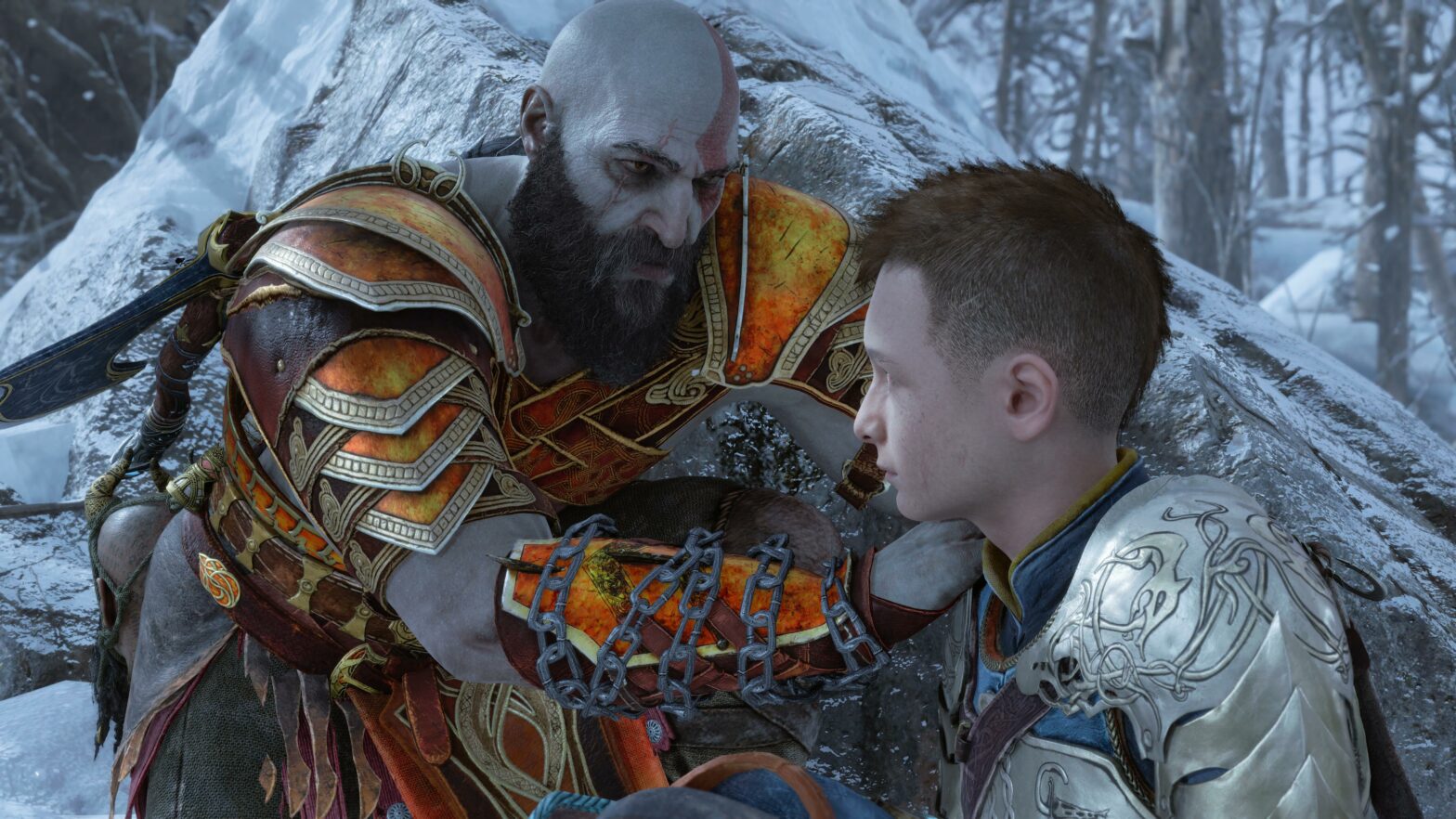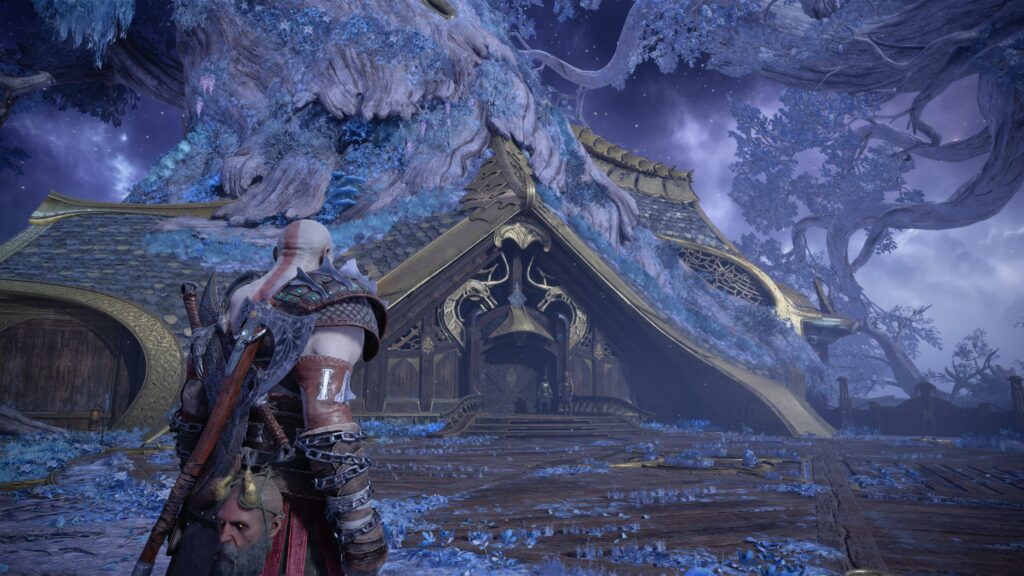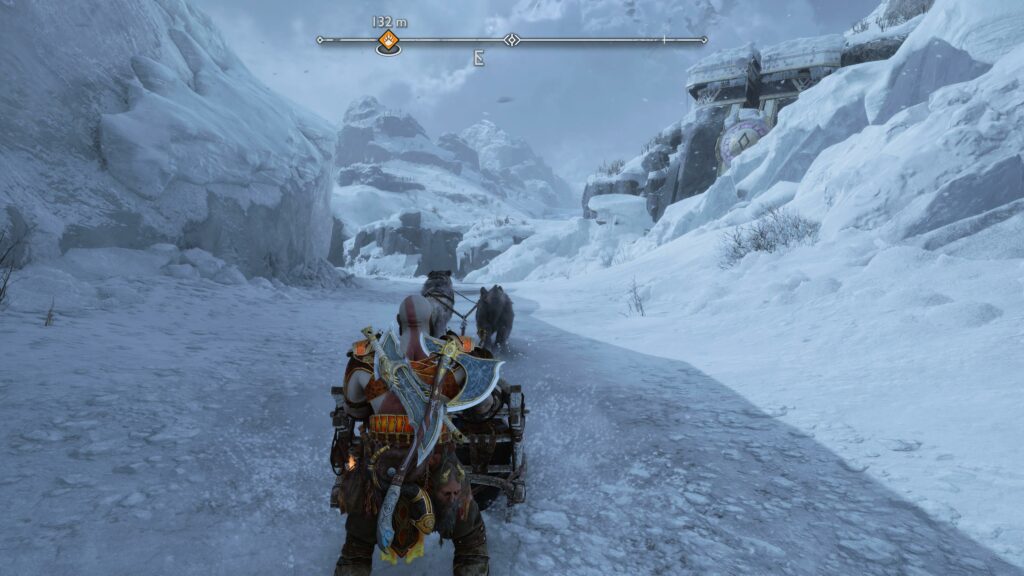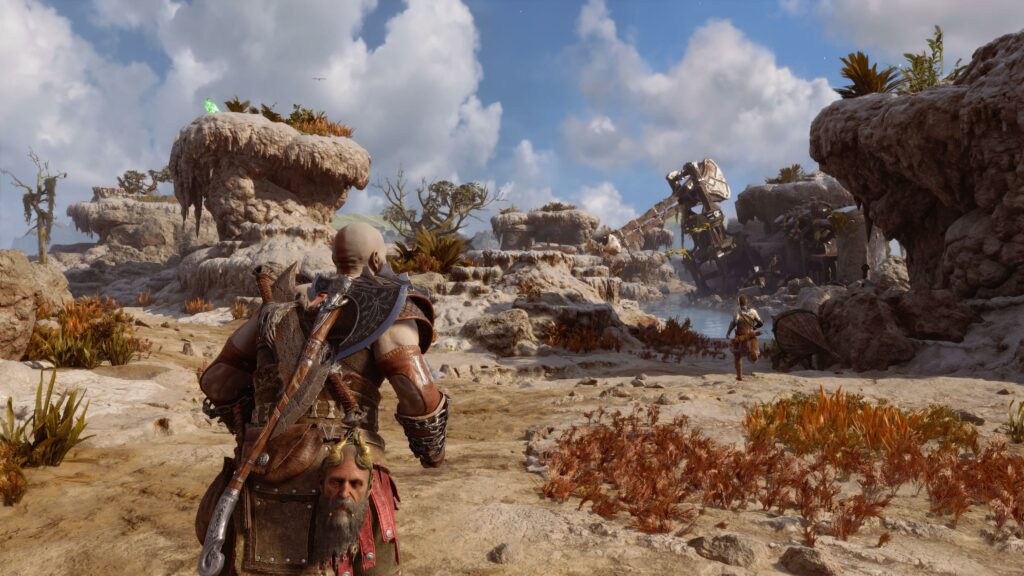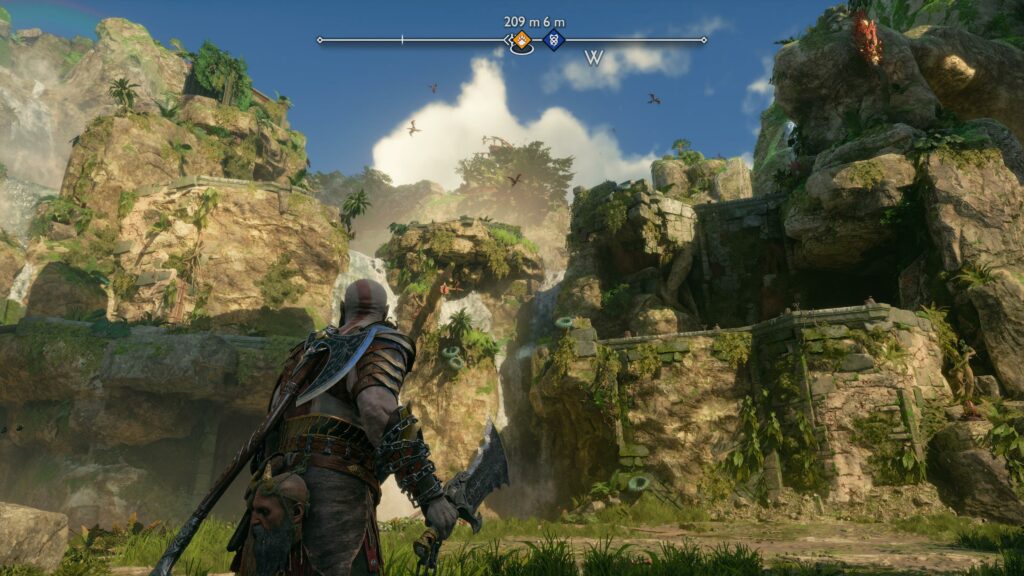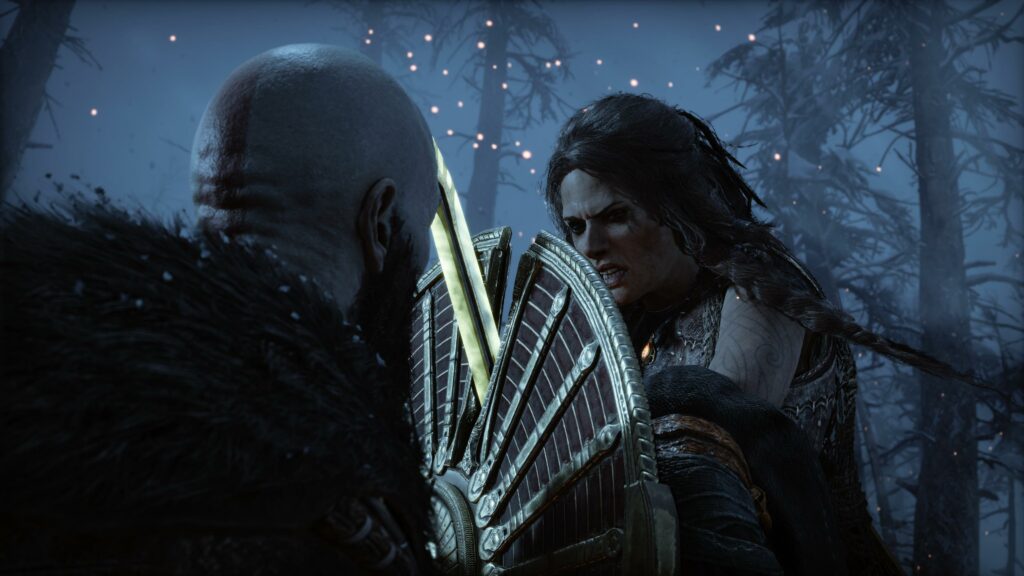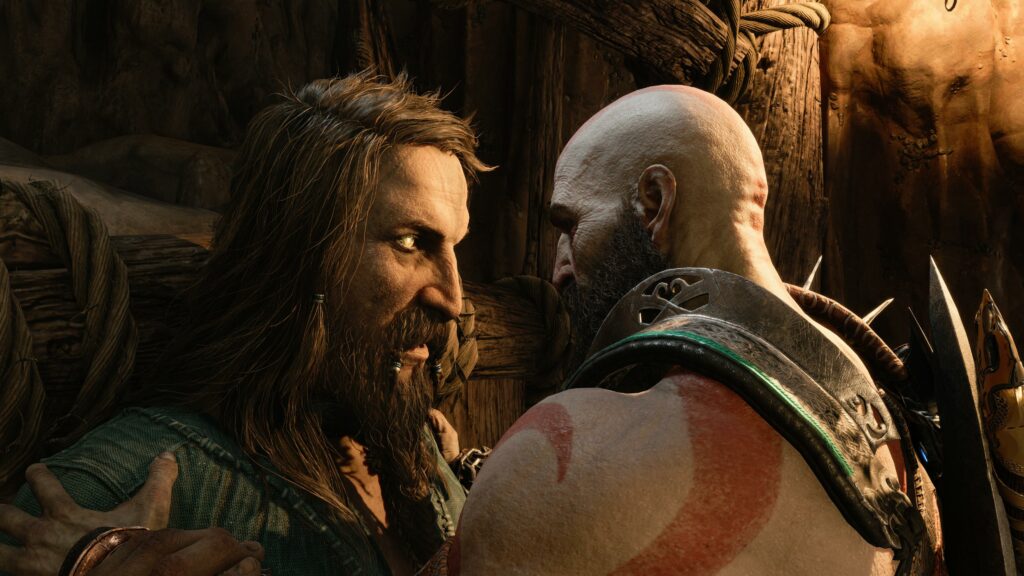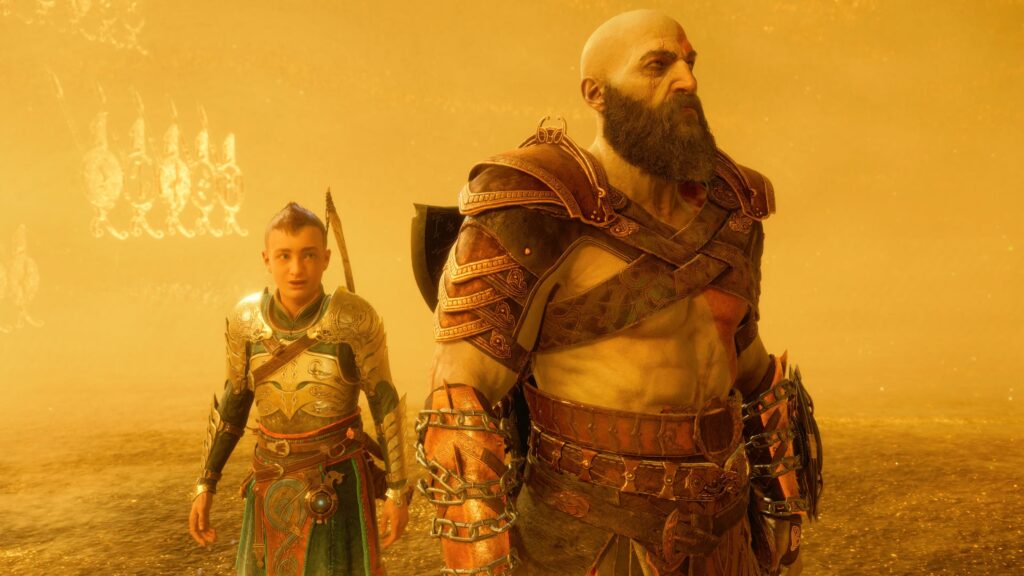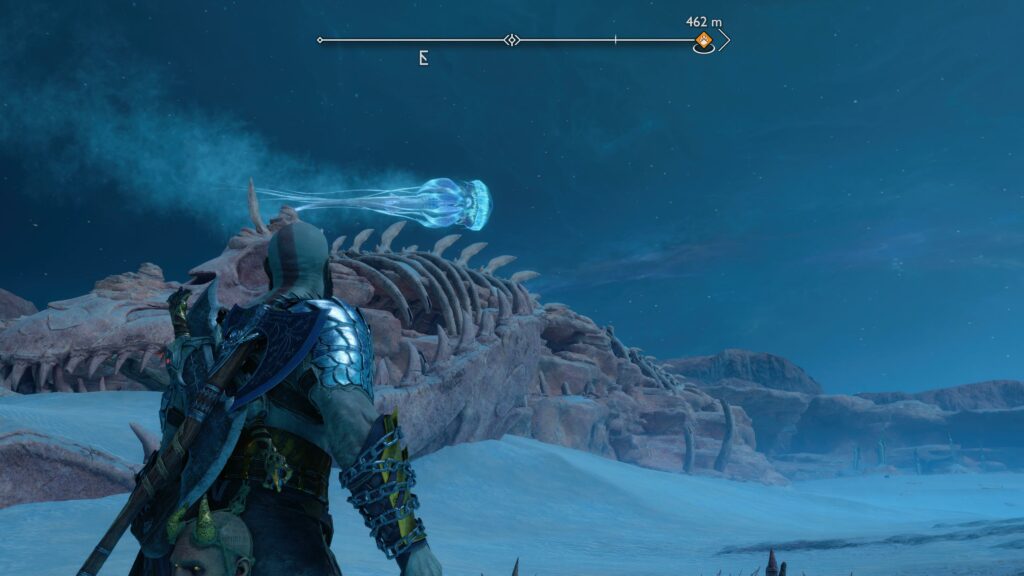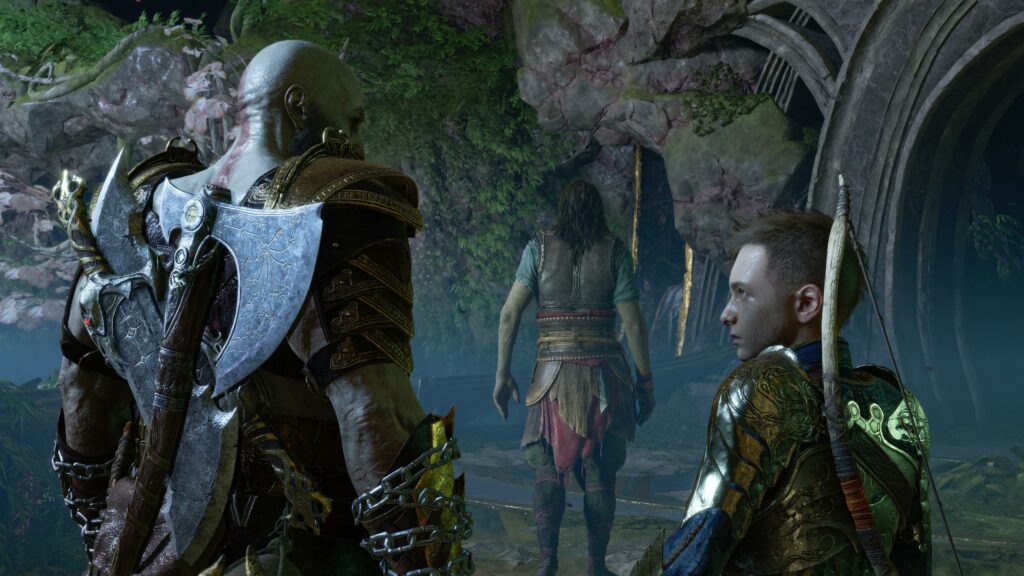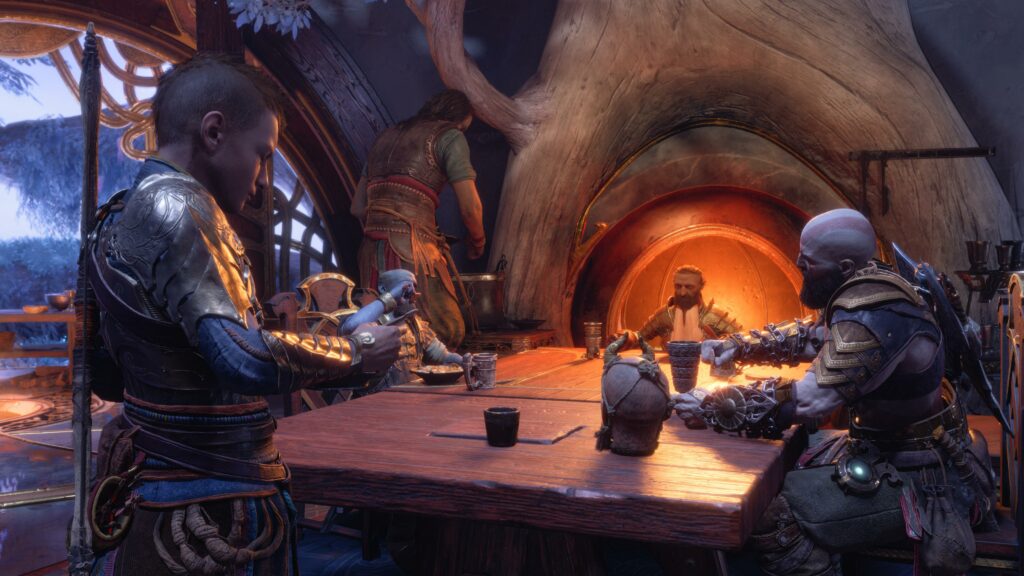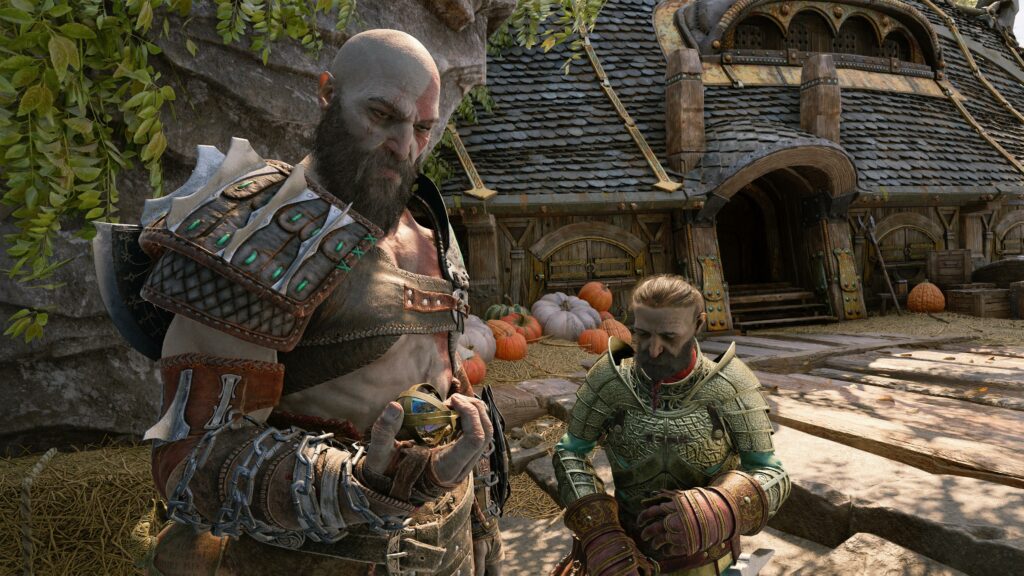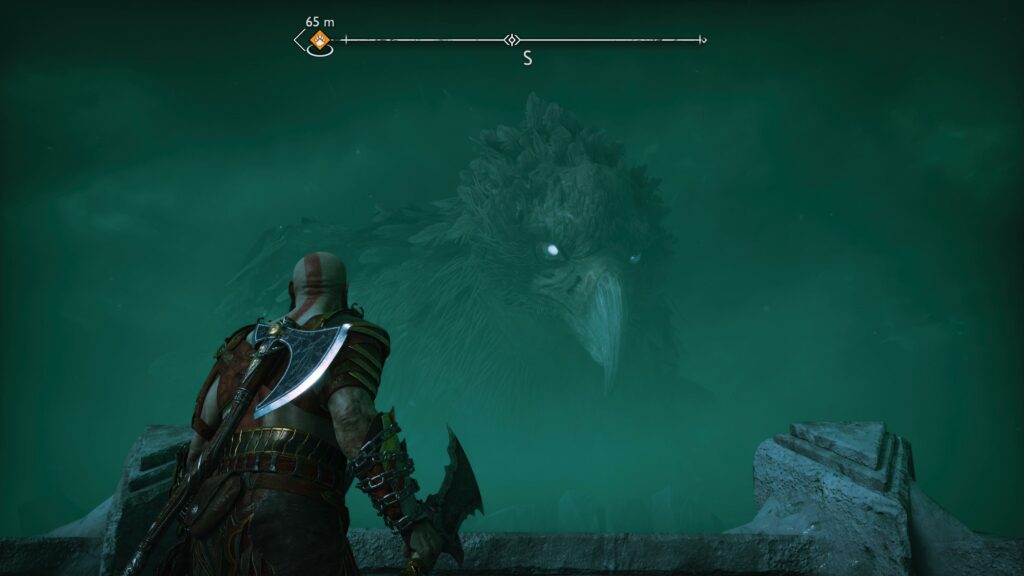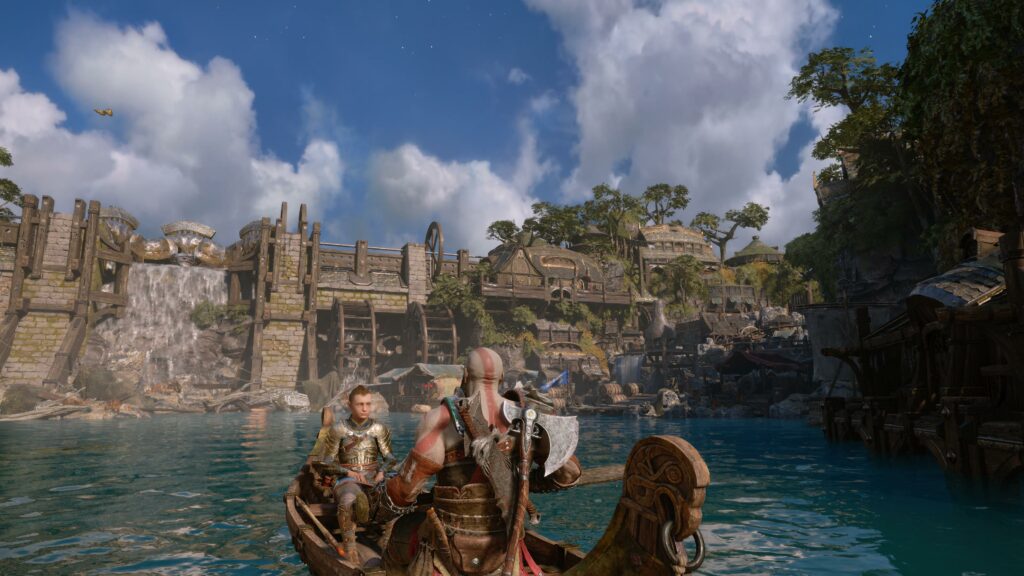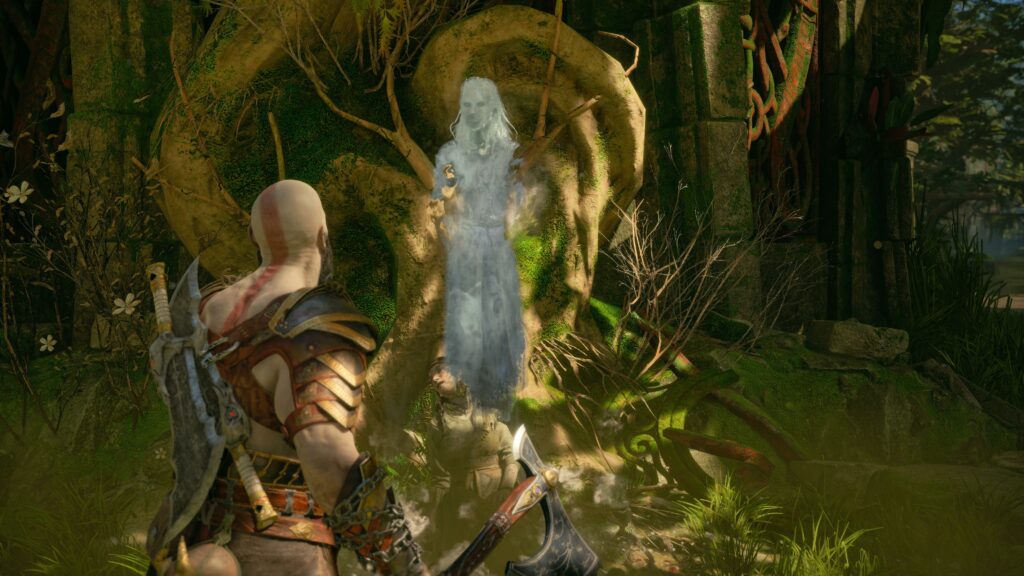You'll love it if:
- You want to enjoy an thrilling story.
- You love cinematic games.
- You're looking for engaging combat, but you prefer quality over quantity.
Not for you if:
- Linear storytelling is not your vibe.
- You can't stand frequent and lengthy cinematics.
It’s not often we get the opportunity to see a media product become bigger than the niche it belongs to. Last time it was Avengers: Endgame and the way that movie took over pop culture for months. In the gaming industry, which is hardly considered niche anymore, things are a little different. There are very few titles that we can all agree deserve a place on the must-play podium. For God of War Ragnarok, however, there’s no room for such a debate. It doesn’t matter if you’re into gaming, if you’re looking for what to get your nephew a present for, or if you just popped open YouTube this past month. You’ve bumped into someone talking about it, gawked at the posters, enjoyed the trailers. And surely at some point you thought to yourself: “should I give it a shot?”. You definitely should, and I’m here not to convince you, but to prove to you that this game is worth your time.
The release of God of War Ragnarok shook pop culture and we all felt it. The entire internet has been holding its breath since the beginning of November to see if Santa Monica Studio would manage to give us something on par with God of War (2018). After all, history shows that sequels hardly ever manage to live up to the first in a series. No one imagined that Ragnarok would make one of the most talked about games of the past decade feel smaller in scope. Not in terms of visuals, not even in terms of gameplay, but in terms of the unforgettable story conveyed through the depiction of a beautiful yet violent world, with characters you can’t help but adore.
TL;DR
God of War Ragnarok is a masterfully structured, unforgettable experience. It takes you to a fairy tale-like world, and tells you a story that hits you with a barrage of emotions, teaching you something new every step of the way. It’s more expansive, more charming, and more moving than anything you’ve experienced before.
All the images in this article are screenshots captured in-game or during cinematics from the PlayStation 5 version of the game, and were cherry-picked in order to avoid spoiling anything crucial to your enjoyment.
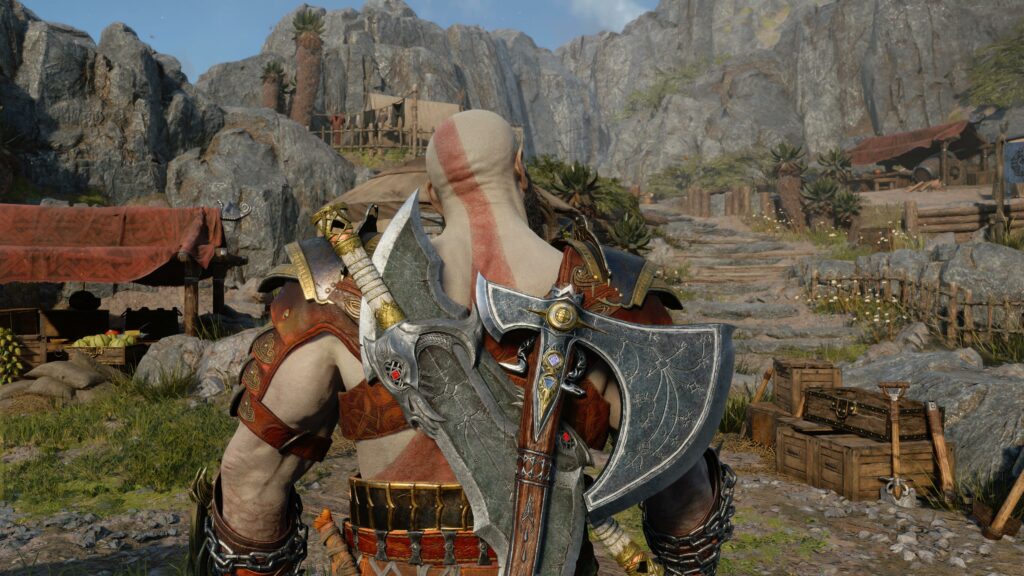
God of War Ragnarok: Presentation
I’m honestly struggling to find the words to describe the endless visual delight that is God of War Ragnarok. While we’ve been spoiled by the recent releases from PlayStation Studios, there’s no over-the-top technological leap here that I’ll need to elaborate on. God of War Ragnarok builds on the solid foundation laid by its predecessor and expands in all directions, keeping intact the character and soul that made the first title stand out. Without a doubt, it’s the excellent second half of one whole.

Journey through Norse mythology
Even though it’s following in the footsteps of its predecessor, God of War Ragnarok manages to innovate by presenting locations we’ve already been to, in a completely different light. From the snowy-white landscapes of Midgard, to the warm shores of Svartalfheim, the humid swamps of Vanaheim and the hostile deserts of Alfheim: it all feels so familiar, yet so foreign at the same time. And everything is complemented by realms that were inaccessible four years ago. And yet, the most impressive component of Ragnarok is its unmistakable art style. An enchanting glue that makes all these settings that are so different from each other fit together like pieces of a puzzle, piecing together a broader picture.
The landscapes we find ourselves in seem like something out of the pages of a fairy tale, yet they’re overflowing with the brutality and harsh realizations that our protagonists are constantly falling upon. This could very well be categorized as a fairy tale for adults because it will certainly give you all sorts of fuzzy feelings. Unlike the pages of a book however, that usually showcase a static world, God of War Ragnarok unveils a fully interactive universe that is teeming with life and reacts to the characters’ movements and the events of the story without ever ceasing to impress.
Blink and you’ll miss it though, it’s not the kind of beauty that seeks to grab hold of your attention, but instead rewards those who know where to turn their eye. It’s full of captivating moments that will make you put down your controller for a moment and take a mental screenshot, sort of like a postcard from memories you made in front of your screen.
A step above Hollywood quality
The beautiful backdrops are just one part of the experience, which simply frame the core of the experience. The characters are the real essence here, whether used as vehicles for the narration or for visual presentation. Continuing in the tradition of the series, God of War Ragnarok is a cinematic single-shot experience. Rather than the all-powerful spectators we’re used to be in this sort of games, we step into the role of the traveling companion and let Kratos lead us on this adventure. There are no loading screens, no downtime: this is an elaborate, uniform experience with an uninterrupted, seamless flow. No matter how much I looked for cracks in the design there was nothing to criticize, because there was nothing for me to find.
The biggest upgrade over God of War (2018) comes in the form of facial animations. Four years and a generation of consoles are making the difference between a “good” and a “believable” outcome. The mouth movements during dialogue are correct frame by frame, at least in the default language, and the motion capture has done an excellent job of conveying the full range of emotions the actors are communicating. Surprise, horror, anguish, and anger all run across the face of a Kratos simultaneously as he tries to restrain his emotions while Freya’s lips pop with rage. These are the most memorable moments, with all the others coming across as so natural that you don’t even pay attention.
Running a marathon without a drop of sweat
I’m used to playing most story-driven titles in Fidelity mode, as the lower frame rate isn’t something that bothers me in cinematic-style games. However, God of War Ragnarok’s intense combat sequences and the negligible differences in textures between native 4K at a locked 30fps and variable resolution at a steady 60fps made the choice very easy. Performance mode it is, then, with the PlayStation 5 maintaining a rock-solid 60fps throughout my first playthrough. The lower than 4K resolution is hard to discern, and the extra frames per second will save your skin many times in combat.
The absence of major bugs is also really commendable. With my save counting almost 40 hours of gameplay, the only thing I noticed was minor clipping of Kratos’ fingers on a couple of grips for the Leviathan Axe during some cinematics. Excellent attention to detail for a new release.
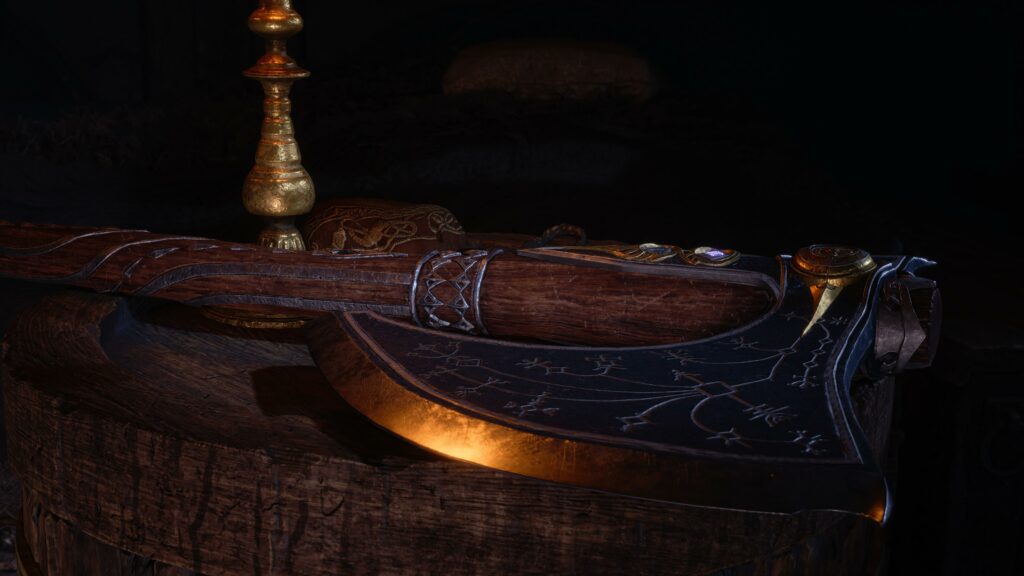
An audio extravaganza
Following the same line as the visual presentation, the sound design is top-notch. The sound effects are superbly designed and blend in as an integral part of the world unfolding on screen. From the deafening clanging of enemy weapons on Kratos’ shield and the violent strikes of the Leviathan Axe on their necks to the serene thuds of the paddle on the water while sailing across rivers and the chilling sound of the snow storms that accompany your adventures in Midgard. Altogether they make up a layered soundscape that feels truly alive and contributes immensely to immersion.
The implementation of 3D audio is exemplary and the positional audio will often help you avoid hitting enemies out of your line of sight. There were times, however, when the audio felt a little out of position in terms of determining depth, such as when Kratos pulls a boat onto the shore.
Dialogue is the main vehicle of the plot in God of War Ragnarok and just as you would expect from a title with such a high production quality, the performances are up to the task. Christopher Judge doesn’t just play Kratos, he is Kratos. The delivery of the sometimes wise, sometimes reactionary quotes that stem from the relentless Spartan training that come out amidst the roars and war cries is truly commendable. Suny Suljic and Danielle Bisutti elevate the experience as Atreus and Freya respectively, with the lead trio performing a real feat by voicing endless lines of script, keeping us company on this mesmerizing journey that can last up to 50 hours.

God of War Ragnarok: Story
Keeping a God of War Ragnarok review free of spoilers takes an incredible amount of effort. Santa Monica Studio bombards you with unexpected surprises, intense encounters, and heartwarming moments from the very first minutes. You’ll need to have played God of War (2018) to follow Ragnarok’s plot, and you’ll enjoy it even more if you know a little about the Norse mythos that the narrative is based on. Not because it follows it faithfully, but because it’s a true homage to Norwegian culture with countless details that showcase the creators’ respect and dedication to the myth without hesitating to use the immense creative freedom given to them.
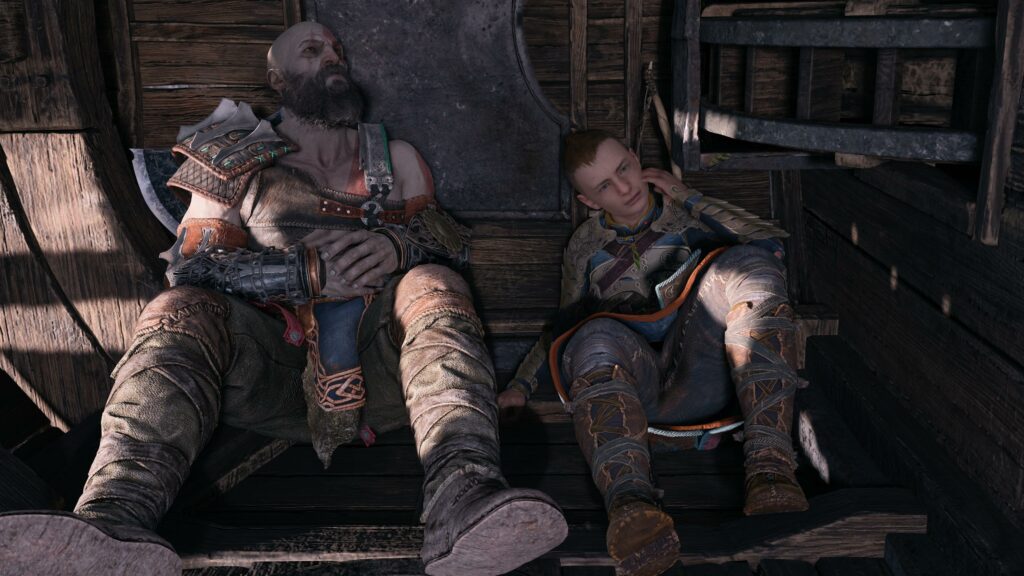
There and back again
The events of God of War Ragnarok take place a few years after the conclusion of the God of War (2018) storyline. After conquering the highest mountaintop in the nine realms, forging a powerful bond between them, and connecting with the most unexpected allies – like the head of the smartest man alive – and enemies alike, father and son struggle to shoulder the repercussions of their actions and forge their own path. They search for their role in the world and try to escape their fate, while being forced to come to terms with one’s mortal nature and the other’s divinity in the context of a story that struggles to answer the question of whether fate is what determines our choices or our choices are what determine our fate.
God of War Ragnarok may be the direct sequel to its predecessor, but it offers a very different experience to the one we got four years ago. We’re not dealing with the second part of an adventure, but the start, climax, and conclusion of a separate journey. It is an entirely linear narrative that has a clear beginning, middle, and end. It is the sequel, but not necessarily the continuation since it strives towards a different direction.
A love/hate situationship
Just like the first chapter of the Norse Saga, Ragnarok deals with some fairly complex themes and explores interpersonal relationships on a deep level. “How far are you willing to go to protect those you love” is a question that keeps reappearing throughout the story. However, it is accompanied by the “are you sure they need your protection?”, which is the more mature version of it. Kratos has learned to accept and express his emotions, but now he is asked to harness them and respect the boundaries of those around him. Atreus is struggling with puberty and everything seems disproportionately foreign and threatening to him. The character arcs of both are exemplarily written, with witty lines, heart-warming moments, and conflicts that will leave you wondering whose side to take.
At the same time, the cast of main characters becomes more expansive than ever before. All of the characters who had smaller, comic relief-style roles in God of War (2018) take center stage in Ragnarok. Mimir, Brok and Sindri are now integral parts of the narrative, and they have their own side stories that are either told alongside the main plot or are well hidden, scattered throughout the side quests you’ll encounter along the way. Even in the side activities, the level of storytelling is extremely high, and it’s really worth investing your time in seeing how these optional little stories unfold.
Personally, I found Mimir to be the one character that really stands out in the context of the story. His astuteness and his ability to keep a down-to-earth perspective no matter what’s going on is the ingredient this quirky company needed to make everything work. At the same time, he demonstrates great resilience in accepting and regretting his past mistakes, while actively seeking ways to correct his ways. As actively as a talking head can do anything that is. His witty lines are the highlight of any dialogue and the way he recounts the lore of Norse mythology makes you hang to his every word.
God of War Ragnarok: Gameplay
The gameplay, or more specifically the lack of gameplay in large chunks of the game, was my biggest problem with God of War (2018). Player involvement in this title was limited in key parts of the experience and it felt more like watching than participating. For those of you who had the same concerns I had about God of War Ragnarok, you can rest easy as the sequel offers a much better approach and expands the gameplay loop in several areas. You can still expect the game to deprive you of control frequently for cinematics, but these are not as lengthy as in the previous game in the series.

Blood-pumping combat sequences
The combat system has received many improvements and that’s a great thing, as Kratos may have matured, but destruction continues to follow him everywhere. The battles are spectacular and you can feel the weight of Kratos’ attacks on his enemies. The immersion is constructed in part through the exquisite use of DualSense’s capabilities, which rarely stops buzzing, which will drain your controller’s battery very quickly. Still, that’s a fair trade. The best overall Quality of Life upgrade that Ragnarok brings to the table, however, is a wider camera perspective, giving you a better view of the battlefield at all times.
The Blades of Chaos are available from the very beginning of the story, and switching between them and the Leviathan Axe during most combat sequences is almost a necessity, with enemies spreading across the verticality of each level, keeping their distance, or having elemental weaknesses to fire or ice respectively. Of course, you can power up your weapons with the help of Brok and Sindri and choose the appropriate weapon handles. The same goes for the shield now, which you can change with one that suits your playstyles, while the different shield ronds give you very some useful stat boosts and passive abilities, which will save your ass a lot if you’re playing on the higher difficulties. The stronger armor sets are just as hard to acquire as God of War (2018), and they remain just as beautiful.
Dusting off
More abilities are available than ever before, and you unlock more and more as you progress through the main story or complete side activities. The new and improved skill tree offers plenty of scope for customizing the gameplay, as you can now disable any ability that doesn’t suit your style. Of course, there are also features that are of little use, such as the addition of skill mods, which only slightly overload the functionality of some already powerful abilities. Worth mentioning is the new Amulet of Ygdrassil, a wearable of sorts that allows you to use various passive abilities.
The difficulty of the combat is never a problem, with me getting through the battles in the story quests without a problem, but some encounter some significant resistance in certain side bosses from the wide selection of side-challenges this game has to offer. I completed the story at 35 hours of play on the Give Me Balance difficulty, with plenty of side questing, but without going out of my way to hunt down all the upgrades or the more powerful armor sets.
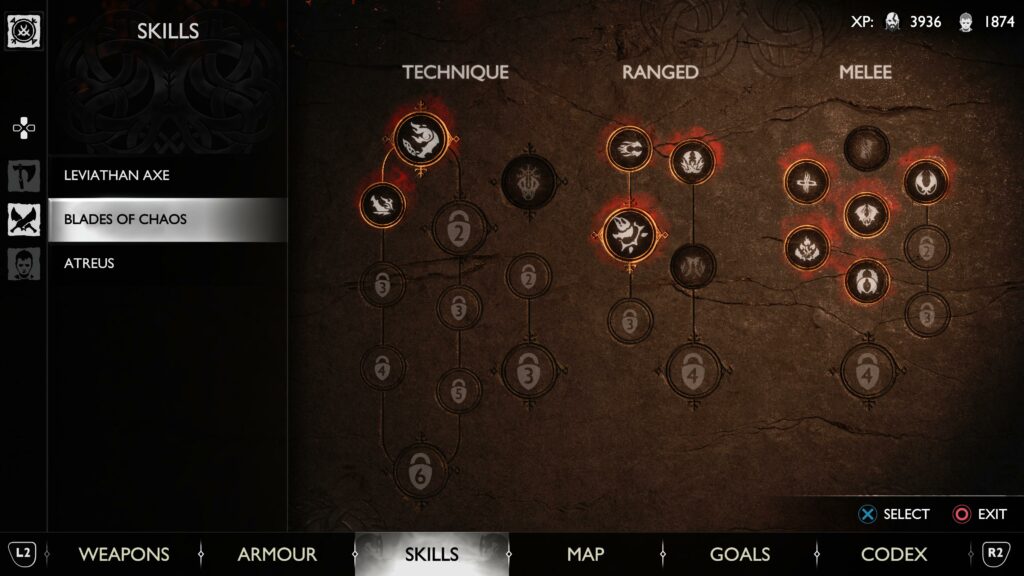
The end of the world can wait
God of War Ragnarok includes more open areas – either due to the increased horsepower of the newer systems or the modified design language – that really beg the player to explore. Gorgeous landscapes, a ton of loot, and all sorts of hidden encounters are just what a world needs to feel alive, and Santa Monica Studio has found the perfect recipe. I was concerned at first about having more open-world sections, as the cinematic linear nature of the game could very well be lost in translation. Thankfully, Ragnarok is a far cry (heh) from checklist-type games, which now all look the same and lack real substance. Even so, the expanded list of side quests offers plenty of content for anyone who wants to feel like their 80€ was worth it. I dare say, in fact, that the side content gatekeeps some of the beautiful moments in Ragnarok, but I’ll let you discover that for yourself.
As in the God of War (2018), The Path marks the series of story missions, while the side quests are marked as Favours. There’s also a long series of challenges to complete, under the Trials menu. The side quests vary in quality, and certainly don’t keep up with the narrative techniques seen in the main story. The best of them add considerable depth to the cast of characters and expand the lore of the world. Others may not be as noteworthy on a narrative level. But they do have the ability to transport you to hidden areas that contain some of the best puzzles in the game.
Puzzle-solving is one of the most used gameplay mechanics in Ragnarok, with many areas locked behind easy to moderately difficult puzzles. Personally, I didn’t find them tedious, as many of them push you to find imaginative ways to use the environment and physics to achieve your goal. Aside from that, most of the puzzles are well-designed and make excellent use of Kratos’ weapons and Atreus’ abilities, easing you into the game’s systems. Having strong post-game content is another great aspect of Ragnarok, though so far I don’t find it any better than the Valkyries that its predecessor had to offer.
God of War Ragnarok: Verdict
God of War Ragnarok is arguably one of the best media products you can consume at this time. It’s a superbly designed game, both visually and audio-wise, full of powerful moments that resonate with you and are etched into your memory. It tells a very mature story, the underlying meaning of which may escape the younger fans who will buy this game expecting that highly violent blockbuster thet this series has gotten us used to. Not that there aren’t moments where Ragnarok gets overly violent, but just like Kratos, those of us who played the first installments of the series on the PlayStation 2 and 3 as kids have grown up and violence is no longer what gets us hooked.
God of War Ragnarok is layered, it’s mature, and above all, it’s a complete experience. When you get to the credits, it won’t make you yearn for “more”, but for “the same, again”.
Comparisons with God of War (2018) are inevitable, but Ragnarok is the slightly more refined second part of the Nord saga and leaves little room for criticism, let alone one that is unconstructive. It successfully builds on the foundation of the first chapter, not afraid to toss aside what no longer works, simply to keep the wow factor on high levels. Ragnarok is more subtle in many of its aspects, but don’t let that fool you, its individual elements are bolder than those of its predecessor.
We would like to thank PlayStation Greece for providing the review copy we used.
